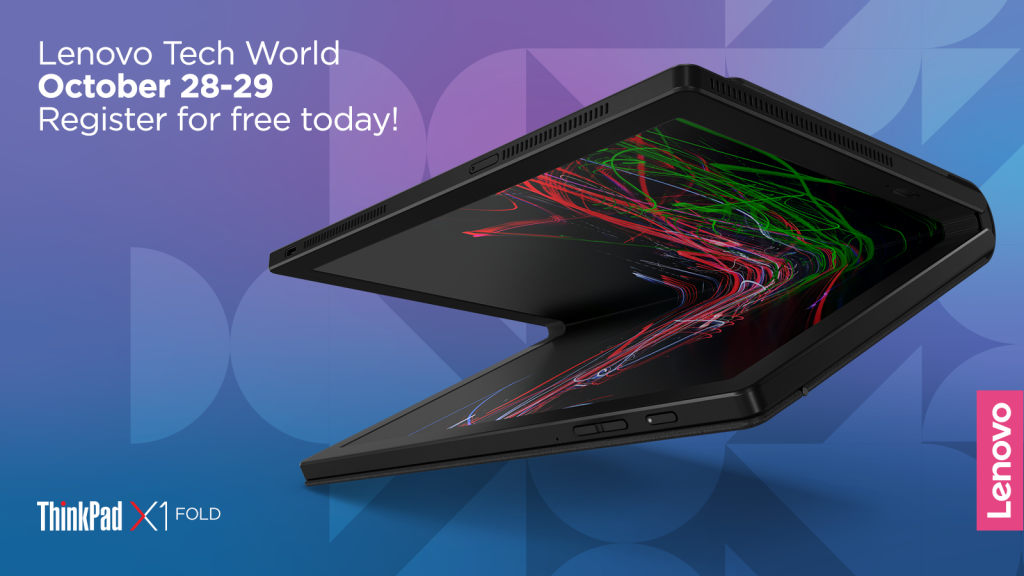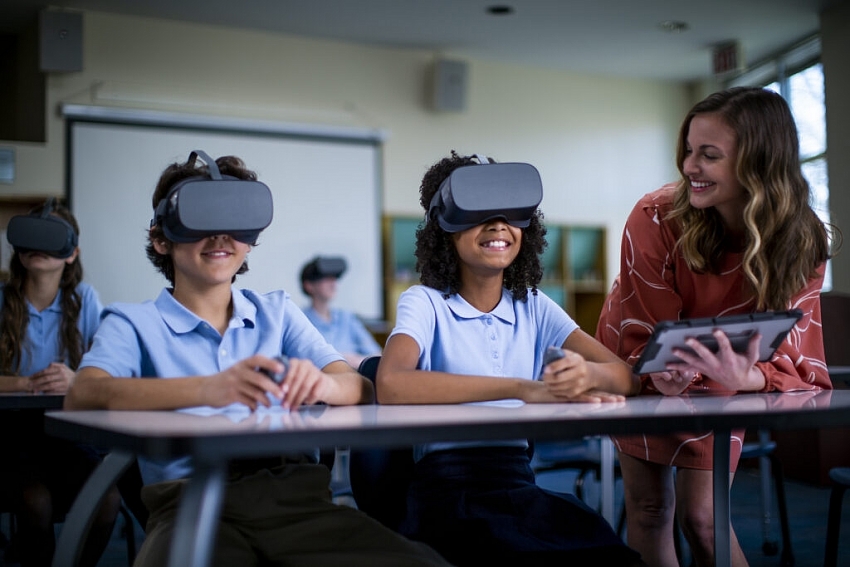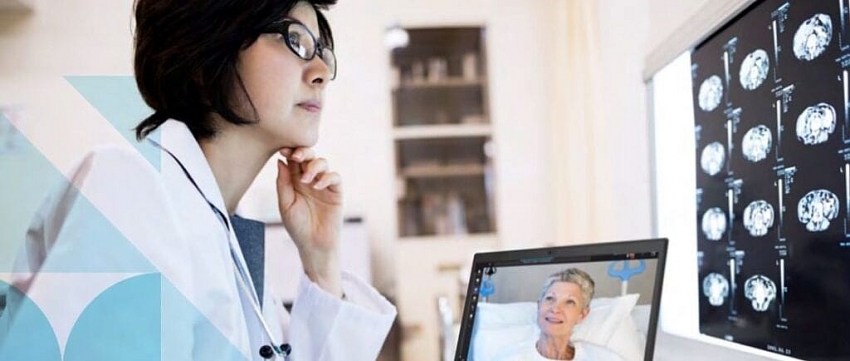Tech World 2020: Visions for connection, flexibility towards smarter world
 |
| Lenovo Tech World 2020 |
Making the opening speech, Lenovo CEO Yuanqing Yang said that, “Technology not only provides solutions but ignites hope, inspires possibilities, and confirms that human intelligence can make a difference in a chaotic world.”
“It is with this passion and belief in technology that we launch Tech World 2020 – entirely virtually for the first time ever.”
The world fundamentally changed in 2020 when the global pandemic upended people's senses of safety, productivity, and connection to each other.
For Lenovo and its global community of employees, customers, and collaborators, this meant leveraging every bit of expertise, empathy, and intelligence to adapt. As it prioritised supporting communities and protecting our workforce, it also embraced rapid transformation in manufacturing, logistics, and – of course – in technology.
During Tech World, Lenovo visionaries and partners across industries reflected on this unprecedented year and look forward to a faster, more connected, and more flexible future. The emphasis throughout the two-day event is in part on the company’s relationship to technology – at the consumer and enterprise levels – brought into focus by the challenges of the global pandemic. It’s not just about the world’s first foldable PC poised to reimagine portable productivity, the industry’s first 5G PC or a suite of breakthrough devices, though there will be plenty of innovation on display. Instead, Tech World sessions explore the most exciting and essential frontiers of technology.
“As we see the smartification of classrooms, workspaces, and even cities take place worldwide, Lenovo is committed to providing the products, services, and solutions equipped with core technologies like AI, cloud/edge computing, and augmented reality,” said Gianfranco Lanci, Lenovo president and COO.
Future of Remote and Hybrid Work: Versatile, Collaborative, and Powerful
As employees across industries work remotely and new hybrid workplace models emerge – those fortunate enough to have the option – the lines between work and personal lives often blur.
According to Eric Yu, senior vice president and general manager of Lenovo’s Intelligent Devices Group’s Small and Medium Business (SMB) Segment, while individuals may be working from the comfort of their homes and saving time because they are not commuting, the research shows that most individuals are working more hours each day and they are multi-tasking even more than before.
“With the right technology, individuals can be better at multitasking and reap the benefits of increased focus and efficiency which in turn can restore a greater work-life balance,” he added.
In the current working environments, employee experience (EX) is even more important than ever. From a recent Lenovo research study, IT leaders say they plan to nearly double their investment in EX initiatives over the next two years. The biggest reason is the fact that EX scores improve with employee satisfaction with technology.
Some of this technology, including the versatile ThinkBook 15 Gen 2 i's integrated wireless earbuds for instant collaboration or the ThinkBook 14s Yoga i’s Smart Pen, intelligently adapts to the user’s behaviour. Others, like the ThinkPad X1 Fold, offer an entirely new and portable form factor to reimagine productivity on the go.
Frontiers of IoT: Smarter commercial and retail
Virtual work and interaction are not always an option, and even when possible, it might not be preferable for everyone. As we return to offices or retail stores – a return to normalcy for many – the Internet of Things (IoT) will make the experiences smarter, safer, and more seamless.
Lenovo’s ThinkIoT offerings, developed in concert with key industry partners, help lead the way. Touchless entryways integrated into badges or smartphones, temperature sensors, AI-assisted adaptations to people and their movements, and other tech combine into holistic solutions.
The hybrid work models of the near future benefit from the rise of IoT, here deployed to meet the immediate challenges of COVID-19. In many cases, individual solutions already existed, but IoT and the 2020 landscape demanded intelligent integrations.
Retail operations saw an inevitable shift from primarily in-store sales to more omni-channel “buy-online-and-pick-up-in-store” models. The dramatic shifts let retailers take advantage of their inventory and local customer reach while minimising expenses. What’s next?
“Brick-and-mortar retailers offer a unique experience for shoppers that cannot be fully replicated online,” said John Gordon, president, CIoT Business Group, Lenovo. “With ThinkIoT Smarter Store Solutions, we’re helping these important retail businesses create even more differentiated customer experiences while improving their bottom line so they can continue to grow during challenging economic times.”
Empowering and education and gaming
The early months of 2020 produced many stopgap solutions: provide technology to those in need, support remote education through hardware and software, and trust that the world will look different in autumn. It does look different, of course, but not in the ways many hoped. Still, technology has leapt forward and will have positive impacts well beyond 2020.
 |
“To support personalised education and entertainment, we’re providing more customised and comprehensive solutions encompassing PCs, accessories, software, and services tailored to different student segments,” said Johnson Jia, senior vice president and general manager of Lenovo Intelligent Devices Group’s Consumer Business Segment and Advanced Innovation Center. “This means offering students with purposeful innovation to ultimately deliver better learning and entertainment experiences.”
Rich Henderson, Lenovo’s director of Global Education, Intelligent Devices Group, said that, “As we realise technology’s abilities to enhance student education and its potential to change lives, it’s incumbent upon individuals and organisations in the tech space to implement inclusive, accessible solutions – not only for the sake of our children’s education, but for the future sake of a more connected society.”
“Now, we’re launching new grade school and collegiate e-sports solutions to create a more open and competitive landscape and leveraging knowledge that school-supported gaming can actually improve academic performance and feelings of community. And sure, offering some of the world’s lightest gaming laptops with the latest graphics doesn’t hurt either.”
Lenovo’s portfolio of education offerings continues to evolve, especially in hybrid learning models, incorporating the latest in affordable Chromebooks, new classroom VR technology, and platforms to match ever-changing approaches to teaching.
Virtual healthcare and telemedicine
Telemedicine leapt from a question of convenience and more global access to care to a necessity during coronavirus. A steady rise in virtual care and consultation over the past decade became abruptly meteoric – a 600 per cent increase in the first quarter of 2020. Technology has to both meet these needs and develop new solutions.
A powerful tool to advance telehealth is virtual rounding, where physicians no longer visit all patients in their rooms but still communicate directly.
 |
“Lenovo Virtual Rounding was rapidly developed and brought to market in response to the acute needs of healthcare systems during the global COVID-19 pandemic,” said Dr. Bob Monteverdi, Lenovo’s director of Global Healthcare Solutions, Intelligent Devices Group. “Physician-patient communication is fundamental for good care, this solution preserves valuable face-to-face time, making daily rounds more efficient, convenient, and safe.”
In a related instance of rapid innovation, Motorola engineers developed software for Brazilian hospitals to monitor patient recovery. Lenovo also partnered with UNC-Chapel Hill in the US to develop AI-powered kiosks to encourage social distancing and mask-wearing as audiences return to live events.
Lenovo also brings AI directly to healthcare providers, optimising hospital infrastructure and operations and fundamentally changing diagnosis and treatment. The company’s collaboration with Techsomed, for example, allows for real-time observation of tumor ablation to accelerate cancer treatment and recovery.
Supercomputers remain one of Lenovo's greatest tools to hunt for vaccines and solve other pressing problems. And the next decade may see even more dramatic and patient-centric transformation.
What the stars mean:
★ Poor ★ ★ Promising ★★★ Good ★★★★ Very good ★★★★★ Exceptional
Related Contents
Latest News
More News
- Vietnam GDP posts second-strongest growth since 2011 (January 06, 2026 | 08:35)
- Double-digit GDP growth within reach with shift to higher-value expansion (January 06, 2026 | 08:33)
- Ho Chi Minh City projects $10.5 billion remittance inflows in 2025 (December 31, 2025 | 18:58)
- Digital shift reshaping Vietnam’s real estate brokerages (December 31, 2025 | 18:54)
- New decree sharpens enforcement in securities market (December 31, 2025 | 18:53)
- Voluntary Sustainability Standards pave way for Vietnam’s agricultural exports (December 31, 2025 | 09:00)
- Gold market reform advances as SBV receives applications for bullion production (December 30, 2025 | 12:07)
- Textile apparel firms deliver robust earnings despite global tariff pressures (December 30, 2025 | 10:09)
- Ho Chi Minh City hits $8.37 billion in FDI (December 29, 2025 | 08:28)
- Tax sector wraps up 2025 and sets priorities for next year (December 25, 2025 | 14:00)

 Tag:
Tag:

























 Mobile Version
Mobile Version